Tunnels run beneath Chinatown: brick-walled passages that were once home to people and activities that could not be mentioned aboveground.
Rick Lew knows, because he walked the passages as a child, entering through a trapdoor in his grandfather's liquor store.
"There was a nightlife you couldn't see from the streets," he said.
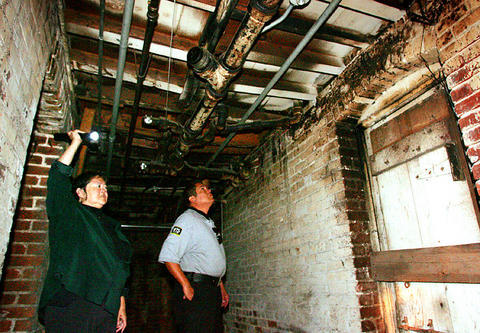
PHOTO: AP
But to many others, the lace-work of tunnels sprawling under the city was just another tall tale from Fresno's days as a Western railroad town and a hub of gambling and prostitution.
Now, a group of archeologists is using ground-penetrating radar to find evidence of the secret passages, which are believed to branch out from long-abandoned basements littered with cobwebs and filth.
The project, funded by the city and headed by a group working to preserve Chinatown, will take data gathered via radar and compare the findings to the memories of those who recall the neighborhood's heyday, said Kathy Omachi, vice president of Chinatown Revitalization. That will help archeologists decide where to dig trenches and look for the passages, researchers said.
The approximately six blocks just west of the railroad tracks that make up the historic Chinatown were Fresno's birthplace, said Karana Hattersley-Drayton, the city's historic preservation officer. Unlike the better-known Chinese enclaves of San Francisco and New York, there's little left of it today -- at least on the surface.
But fire insurance maps from the 1880s show a densely populated area, a stark contrast from the wide-open ranch and farm country all around. It was home to the Chinese laborers who laid Fresno's foundations, and to successive layers of immigrants -- Japanese, Armenians, Mexicans, Portuguese, Basques and others -- who were kept separate from the growing white population by the iron boundary of the train tracks.
The area long housed family-run stores, temples, churches, Chinese and Japanese schools. But it was also host to illicit activities kept out of the "good side of town" -- gambling, drinking during Prohibition, and prostitution.
Omachi's father, who was from a Japanese immigrant family, was born here in 1913 "between a bar and a house of ill repute," she said.
Many establishments had basements, some of them interconnected. Of those that can still be seen today, some end in bricked-off walls that longtime residents say hide tunnel entrances.
As late as the 1950s, when Lew was a boy, Chinatown was still thriving -- both its respectable establishments and as its shadier side.
He remembers visiting the underground world with his father, passing though a dark basement before descending into a lit tunnel with an arched roof and enough space for two people to pass by each other. There were people there he recognized from the neighborhood. And then there were the glamorous women whose images remain seared in his memory.
"They were off to the side, in bright satin dresses, one red, one blue," said Lew, speculating that they were probably prostitutes. "I later asked my father about it. He said it was something we don't mention."
Jon Brady, lead archeologist on the project, said the tunnels may have been built to provide cool underground storage in a region known for sweltering summer heat. But they later proved handy for other purposes, even escape when necessary.
"These groups that lived on the fringe could have resorted to them to protect themselves, communicate away from public view, who knows what else," Brady said.
Local lore holds, though it still hasn't been proved by research, that a tunnel one time extended beyond the railroad tracks into the traditionally white part of town, possibly allowing "respectable" citizens access to the illicit charms of Chinatown.
"Some say that was blown up during Prohibition," said Hattersley-Drayton, who got a lot of calls from longtime residents once the project got started. "I'm hearing that from a lot of people, but we just don't know yet."
In the 1950s and 1960s, many of Chinatown's buildings were torn down to make way for new development or freeways, and much of the history was buried, Lew said.
"Many of the older residents packed up and left, and it started getting rough," Lew said. He now lives far from Chinatown, but remains surrounded by artifacts from the days his family was an important part of the neighborhood: tall, elaborately decorated vases, paintings and sculptures handed down by his grandfather, and the old manual cash register that rang up purchases at the liquor store.
Today, Fresno's Chinatown is largely abandoned, peopled by the homeless, with many of its facades boarded up. It's a part of the region's history that's been largely forgotten.
As downtown develops it's critical "to look at where we were," said Patti Miller, spokeswoman for the city.
Someday, Hattersley-Drayton hopes, Chinatown and its excavated tunnels might be developed for heritage tourism, bringing some income to the now-impoverished area.
"This is a first step, and it's about approaching parts of community history that are not in books," Brady said. "Parts that are literally below the surface, but that deserve to be told."
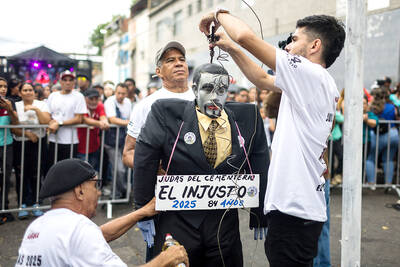
POLITICAL PRISONERS VS DEPORTEES: Venezuela’s prosecutor’s office slammed the call by El Salvador’s leader, accusing him of crimes against humanity Salvadoran President Nayib Bukele on Sunday proposed carrying out a prisoner swap with Venezuela, suggesting he would exchange Venezuelan deportees from the US his government has kept imprisoned for what he called “political prisoners” in Venezuela. In a post on X, directed at Venezuelan President Nicolas Maduro, Bukele listed off a number of family members of high-level opposition figures in Venezuela, journalists and activists detained during the South American government’s electoral crackdown last year. “The only reason they are imprisoned is for having opposed you and your electoral fraud,” he wrote to Maduro. “However, I want to propose a humanitarian agreement that
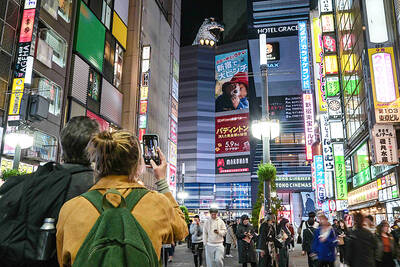
Young women standing idly around a park in Tokyo’s west suggest that a giant statue of Godzilla is not the only attraction for a record number of foreign tourists. Their faces lit by the cold glow of their phones, the women lining Okubo Park are evidence that sex tourism has developed as a dark flipside to the bustling Kabukicho nightlife district. Increasing numbers of foreign men are flocking to the area after seeing videos on social media. One of the women said that the area near Kabukicho, where Godzilla rumbles and belches smoke atop a cinema, has become a “real
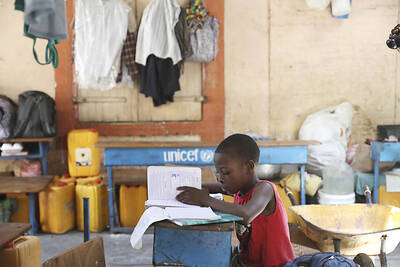
‘POINT OF NO RETURN’: The Caribbean nation needs increased international funding and support for a multinational force to help police tackle expanding gang violence The top UN official in Haiti on Monday sounded an alarm to the UN Security Council that escalating gang violence is liable to lead the Caribbean nation to “a point of no return.” Special Representative of the UN Secretary-General for Haiti Maria Isabel Salvador said that “Haiti could face total chaos” without increased funding and support for the operation of the Kenya-led multinational force helping Haiti’s police to tackle the gangs’ expanding violence into areas beyond the capital, Port-Au-Prince. Most recently, gangs seized the city of Mirebalais in central Haiti, and during the attack more than 500 prisoners were freed, she said.
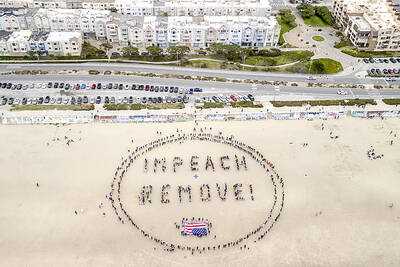
DEMONSTRATIONS: A protester said although she would normally sit back and wait for the next election, she cannot do it this time, adding that ‘we’ve lost too much already’ Thousands of protesters rallied on Saturday in New York, Washington and other cities across the US for a second major round of demonstrations against US President Donald Trump and his hard-line policies. In New York, people gathered outside the city’s main library carrying signs targeting the US president with slogans such as: “No Kings in America” and “Resist Tyranny.” Many took aim at Trump’s deportations of undocumented migrants, chanting: “No ICE [Immigration and Customs Enforcement], no fear, immigrants are welcome here.” In Washington, protesters voiced concern that Trump was threatening long-respected constitutional norms, including the right to due process. The